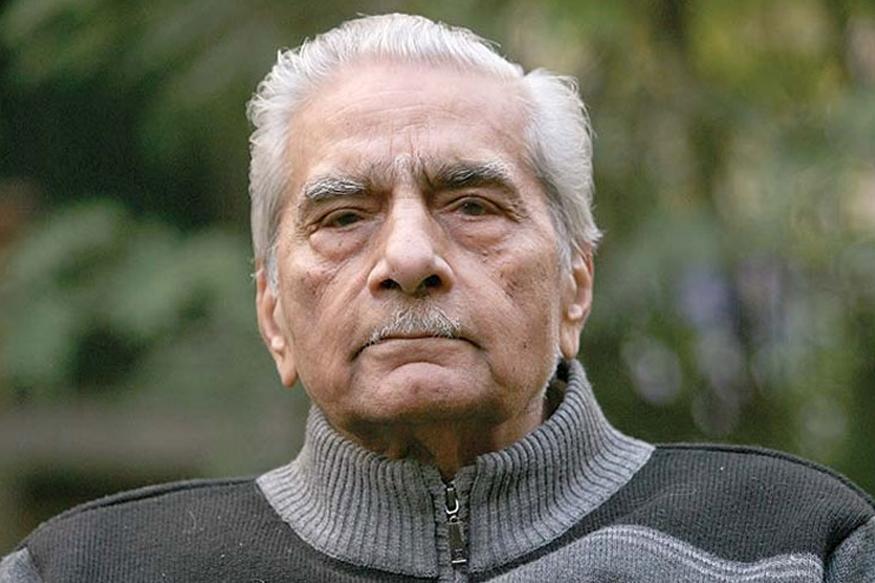Should the Roster be Decided by a Collegium?

Image Courtesy: Hindi News18
A petition had been filed by Shanti Bhushan, an Advocate on Record and former Union Law Minister, before the Supreme Court on April 2 which sought a clarification on the role of the Chief Justice of India (CJI) as the ‘master of the roster’. His petition comes at a time when the CJI faces calls for his impeachment in the Parliament, and there is a rebellion of senior judges of the Supreme Court.
The petition filed by Shanti Bhushan prayed for the following reliefs;
- A declaration that listing of matters must strictly adhere to the Supreme Court Rules, 2013 and the Handbook on Practice and Procedure and Office Procedure. However, this should be subject to a clarification that the words ‘Chief Justice of India’ should mean a collegium of 5 senior Judges of the Court.
- A declaration that the Registry Officials should consult with a number of senior Judges that the Court may determine and not the CJI alone, in matters relating to listing of cases.
- A writ of prohibition or a writ in the nature of prohibition to restrict the CJI or other respondents from listing any matter contrary to the Supreme Court Rules and the Handbook. Further to replace CJI with collegium of 5 senior Judges of the Supreme Court.
- That when matters are mentioned for urgent hearing or listing, only the date or time may be fixed but the Bench would be constituted in accordance with the Rules.
The petition listed several alleged instances, where the power exercised by the CJI as ‘master of the roster’, had been used arbitrarily.
- Campaign for Judicial Accountability and Reforms v. Union of India
- This petition sought the Supreme Court constitute a Special Investigation Team (SIT) to investigate in allegations contained in a CBI FIR. The FIR in question pertained to a conspiracy involving bribes paid to obtain a Judgement in favour of a Medical College. The allegations concerned a case which the present CJI had heard in its entirety. However, the CJI constituted a Bench headed by him and disposed of the matter while imposing a cost of 25 lakhs on the petitioners. The review petition has not yet been listed.
- This petition sought the Supreme Court constitute a Special Investigation Team (SIT) to investigate in allegations contained in a CBI FIR. The FIR in question pertained to a conspiracy involving bribes paid to obtain a Judgement in favour of a Medical College. The allegations concerned a case which the present CJI had heard in its entirety. However, the CJI constituted a Bench headed by him and disposed of the matter while imposing a cost of 25 lakhs on the petitioners. The review petition has not yet been listed.
- Common Cause v. Union of India
- The petition challenged the appointment of the Special Director of the CBI. The matter had been initially listed before Justice Ranjan Gogoi and Justice Navin Sinha. The Bench passed an Order that the matter should be listed before a Bench not comprising of Justice Navin Sinha. The matter was then heard by Justice R. K. Agrawal and Justice Abhay Manohar Sapre. However, on the day the matter was listed, Justice Ranjan Gogoi was not sitting with Justice Navin Sinha. Bhushan alleged that this was in contravention of the Supreme Court Handbook on Practice and Procedure.
- The petition challenged the appointment of the Special Director of the CBI. The matter had been initially listed before Justice Ranjan Gogoi and Justice Navin Sinha. The Bench passed an Order that the matter should be listed before a Bench not comprising of Justice Navin Sinha. The matter was then heard by Justice R. K. Agrawal and Justice Abhay Manohar Sapre. However, on the day the matter was listed, Justice Ranjan Gogoi was not sitting with Justice Navin Sinha. Bhushan alleged that this was in contravention of the Supreme Court Handbook on Practice and Procedure.
- Centre for Public Interest Litigation v. Union of India
- This was concerning the 2G case. The case was deleted from the roster just before the second hearing. It was subsequently listed before a Bench who recused themselves of hearing the petition. The petition was then listed before another Bench even though there were more senior Judges available.
- This was concerning the 2G case. The case was deleted from the roster just before the second hearing. It was subsequently listed before a Bench who recused themselves of hearing the petition. The petition was then listed before another Bench even though there were more senior Judges available.
- Bandhuraj Sambhaji Lone v. Union of India and Tehseen Poonawalla v. Union of India
- These petitions were filed regarding the death of Judge Loya. It was alleged that there were several changes to which Court would be assigned to hear the case. The matter was finally listed before Court number 1 after the CJI had changed the subject roster to send all PIL matters before him.
- These petitions were filed regarding the death of Judge Loya. It was alleged that there were several changes to which Court would be assigned to hear the case. The matter was finally listed before Court number 1 after the CJI had changed the subject roster to send all PIL matters before him.
- Dr Subramanian Swamy v. Delhi Police through Commissioner of Police
- This case involved Shashi Tharoor. The matter was adjourned to satisfy the question of maintainability. The Bench then issued a notice to the respondent without determining maintainability.
- This case involved Shashi Tharoor. The matter was adjourned to satisfy the question of maintainability. The Bench then issued a notice to the respondent without determining maintainability.
- Rohini Singh v. State of Gujarat
- This matter involved Jay Shah, the son of Amit Shah. The matter was listed under the CJI’s Court, even though there were other Courts available to hear criminal matters.
- This matter involved Jay Shah, the son of Amit Shah. The matter was listed under the CJI’s Court, even though there were other Courts available to hear criminal matters.
- Justice K. S. Puttaswamy (Retd.) v. Union of India
- The case pertained to Aadhaar. The CJI at the time, Justice Khehar, had constituted a Bench comprising of Justice Chelameswar and Justice Bobde among other Judges. The matter was placed before a 9 Judge Bench. However, the Bench was later reconstituted and neither Justice Chelameswar nor Justice Bobde was on the newly constituted Bench.
- The case pertained to Aadhaar. The CJI at the time, Justice Khehar, had constituted a Bench comprising of Justice Chelameswar and Justice Bobde among other Judges. The matter was placed before a 9 Judge Bench. However, the Bench was later reconstituted and neither Justice Chelameswar nor Justice Bobde was on the newly constituted Bench.
- Energy Watchdog v. Union of India (ONGC)
- The petition challenged the appointment of a BJP Spokesperson, Sambit Patra as an Independent Director of the ONGC. As well as the appointment of a tainted officer Shashi Shankar as the Chairman and Managing Director of the ONGC. One of the Judges recused himself from hearing the petition. The matter has now been listed on a date in 2020.
- The petition challenged the appointment of a BJP Spokesperson, Sambit Patra as an Independent Director of the ONGC. As well as the appointment of a tainted officer Shashi Shankar as the Chairman and Managing Director of the ONGC. One of the Judges recused himself from hearing the petition. The matter has now been listed on a date in 2020.
- R. P. Luthra v. Union of India and Anr.
- This petition sought an explanation from the Union Government about the delay in finalising the Memorandum of Procedure (MOP) for appointing Judges to the Supreme Court and High Courts. The petition also questioned continuing appointments when the MOP had not been finalised. The matter was initially heard by a Division Bench which passed an Order listing the matter for hearing on November 14. About a week before the scheduled hearing the CJI constituted a 3 Judge Bench and recalled the previous listing Order.
The petition also mentioned the handling of land acquisition matters. The instance mentioned in the petition focused on a situation where a three-Judge Bench held the decision of another three-Judge Bench per incuriam. The decision did not take into account relevant facts or law. The established procedure is that only a larger Bench can hold a decision per incuriam. When another similar matter came before a different Bench, it requested all Courts to refrain from deciding on such matters until the case before it has been disposed of. Subsequently, the CJI listed similar matters before other Benches for hearing.
The petition sought to bring the Supreme Court under the ambit of Fundamental Rights. It was stated that since the Judiciary is an organ of the ‘State’ it should also adhere to the right under Article 14 of the Constitution – the right to equality. Thus, the arbitrary use of power is curtailed by this Constitutional provision. It will be interesting whether the Supreme Court would decide to bestow the position of ‘master of the roster’ onto a collegium of senior Judges, rather than carry on with the current practice, where the CJI alone enjoys the administrative title.
Get the latest reports & analysis with people's perspective on Protests, movements & deep analytical videos, discussions of the current affairs in your Telegram app. Subscribe to NewsClick's Telegram channel & get Real-Time updates on stories, as they get published on our website.
























